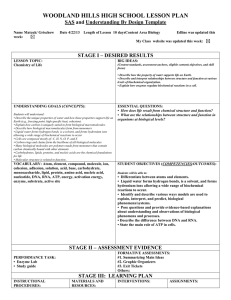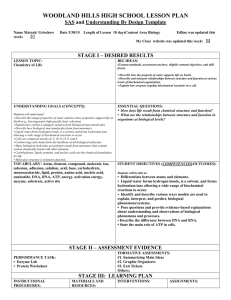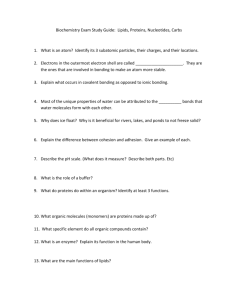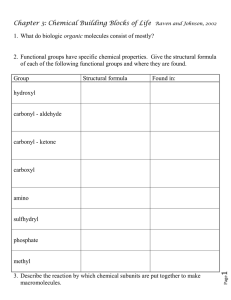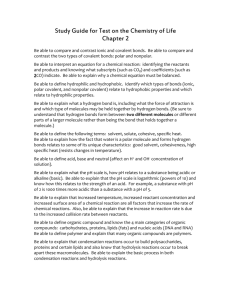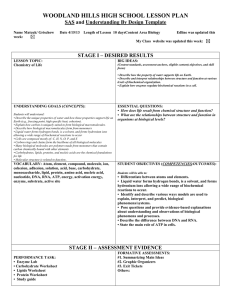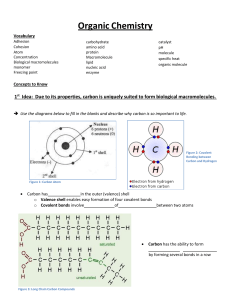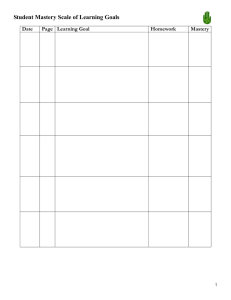WOODLAND HILLS HIGH SCHOOL LESSON PLAN
advertisement
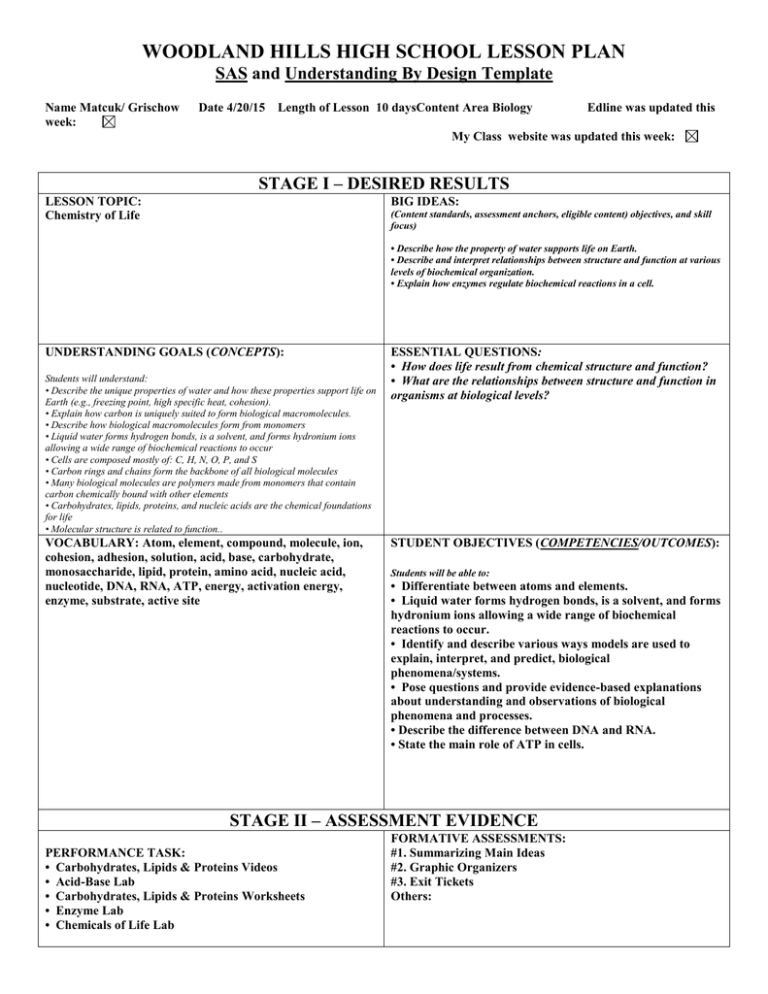
WOODLAND HILLS HIGH SCHOOL LESSON PLAN SAS and Understanding By Design Template Name Matcuk/ Grischow week: Date 4/20/15 Length of Lesson 10 daysContent Area Biology Edline was updated this My Class website was updated this week: STAGE I – DESIRED RESULTS LESSON TOPIC: Chemistry of Life BIG IDEAS: (Content standards, assessment anchors, eligible content) objectives, and skill focus) • Describe how the property of water supports life on Earth. • Describe and interpret relationships between structure and function at various levels of biochemical organization. • Explain how enzymes regulate biochemical reactions in a cell. UNDERSTANDING GOALS (CONCEPTS): Students will understand: • Describe the unique properties of water and how these properties support life on Earth (e.g., freezing point, high specific heat, cohesion). • Explain how carbon is uniquely suited to form biological macromolecules. • Describe how biological macromolecules form from monomers • Liquid water forms hydrogen bonds, is a solvent, and forms hydronium ions allowing a wide range of biochemical reactions to occur • Cells are composed mostly of: C, H, N, O, P, and S • Carbon rings and chains form the backbone of all biological molecules • Many biological molecules are polymers made from monomers that contain carbon chemically bound with other elements • Carbohydrates, lipids, proteins, and nucleic acids are the chemical foundations for life • Molecular structure is related to function.. VOCABULARY: Atom, element, compound, molecule, ion, cohesion, adhesion, solution, acid, base, carbohydrate, monosaccharide, lipid, protein, amino acid, nucleic acid, nucleotide, DNA, RNA, ATP, energy, activation energy, enzyme, substrate, active site ESSENTIAL QUESTIONS: • How does life result from chemical structure and function? • What are the relationships between structure and function in organisms at biological levels? STUDENT OBJECTIVES (COMPETENCIES/OUTCOMES): Students will be able to: • Differentiate between atoms and elements. • Liquid water forms hydrogen bonds, is a solvent, and forms hydronium ions allowing a wide range of biochemical reactions to occur. • Identify and describe various ways models are used to explain, interpret, and predict, biological phenomena/systems. • Pose questions and provide evidence-based explanations about understanding and observations of biological phenomena and processes. • Describe the difference between DNA and RNA. • State the main role of ATP in cells. STAGE II – ASSESSMENT EVIDENCE PERFORMANCE TASK: • Carbohydrates, Lipids & Proteins Videos • Acid-Base Lab • Carbohydrates, Lipids & Proteins Worksheets • Enzyme Lab • Chemicals of Life Lab FORMATIVE ASSESSMENTS: #1. Summarizing Main Ideas #2. Graphic Organizers #3. Exit Tickets Others: STAGE III: LEARNING PLAN INSTRUCTIONAL PROCEDURES: MATERIALS AND RESOURCES: Active Engagements used: #1. Higher Level Thinking Skills #2. Partnering Others: • Projector • Power Point • Lap top • DVD • Worksheets • Lab Equipment • Stem cell video clips Describe usage: • Students will distinguish between atoms, elements, compounds, molecules and ions. • Students will identify the different types of bonds that form molecules and compounds in living things. • Students will understand the importance of pH in the maintenance of homeostasis. • Students will apply their knowledge of the types of bonds to explain the properties of the 4 macromolecules and their functions. • Students will learn about enzymes and how they function. Scaffolding used: #1. Build on Prior Knowledge #2 . K-W-L Others: Describe usage: • The student will build on his knowledge of the characteristics of living things learned in Chapter 1. • They will use what they know and what they want to learn about different organisms and the elements found in those organisms. • They will apply pH in a laboratory activity. • They will discover the macromolecules found in food • They will view video clips of the molecules of life. Other techniques used: Prompting if necessary. MINI LESSON: CONTENT AREA READING: Chapter 2 INTERVENTIONS: ASSIGNMENTS: • Student portfolio • Test Corrections • Extended time for homework and tests • Alternative assignments • Tutoring • College Access • DR/Quiz 2-4 • Enzyme Lab • Protein Worksheet • Videos – Carbs, Lipids, proteins • Enzyme Lab • Protein Worksheet
